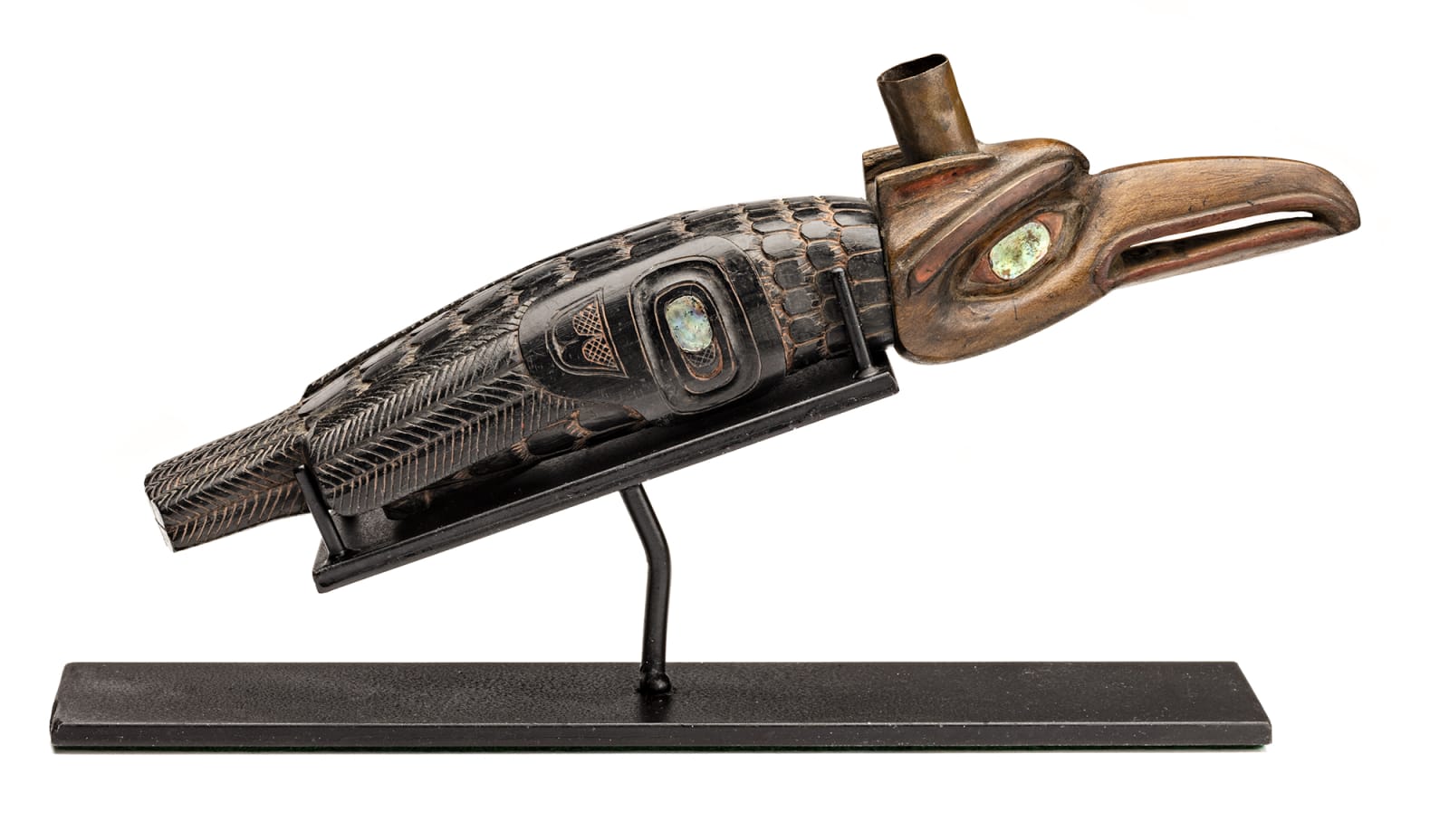UNIDENTIFIED ARTIST, HAIDA
unsigned.
LOT 20
ESTIMATE: $7,000 — $10,000
Further images
We do not recall ever seeing a pipe like this one. It seems entirely likely that the Haida artist was influenced by the pipe-making tradition of the Tlingit, who lived just north of the Haida, traded with them, and were introduced to tobacco at the same time. While the Haida developed a tradition of carving elaborate panel pipes in argillite, the Tlingit produced pipes almost exclusively in wood, mostly carved in the form of birds and other animals. Tlingit pipes were frequently fashioned from the parts of disused rifles: gunstocks for the body of the pipe, and sections of barrels for the bowl; or from other pieces of wood for the figures, and copper or brass for the bowls. Thomas Vaughan and Bill Holm’s 1982 Soft Gold exhibition catalogue illustrates several Tlingit examples collected in the 1860s [1]. We suspect that the artist either travelled north to Tlingit territory, saw imported examples, or was shown examples by a prospective client. Whichever way he was inspired, this Haida artist created a totally original masterpiece.
This Raven Pipe was almost certainly carved during the heyday of Haida ship panel pipe production, in the mid 19th century. While the pipe has no imagery that places it in this period - except of course the very idea of a raven-pipe - stylistically everything about it reminds us of the fanciful ships, portraits of maritime officers and women in European garb, dogs and other fanciful images created during this explosion of creativity. The argillite body of the pipe is carved in the well-crafted and detailed manner seen in the best ship panel pipes, human figures, and recorders. Not surprisingly given the material, the raven’s head is carved in less detail, however it is carved with stylistic flair (not unlike some raven’s heads seen on contemporaneous pipes) and at least as well as comparable Tlingit examples. The touches of abalone are not unlike the ivory and other embellishments we might see on a panel pipe, but the copper bowl is pure Tlingit-style. We would be remiss if we did not mention the raven’s
exquisitely detailed plumage, and its tiny, charming legs tucked close to its underside. It’s a delightful and extraordinary work of art.
1. Thomas Vaughan and Bill Holm, Soft Gold: The Fur Trade & Cultural Exchange on the Northwest Coast of America, pp. 126-131.
Literature: For several examples of Tlingit-style pipes from the 1860s, see Thomas Vaughan and Bill Holm, Soft Gold: The Fur Trade & Cultural Exchange on the Northwest Coast of America (Portland, OR: Oregon Historical Society, 1982/90), pp. 126-131.
Provenance
Private Collection, Vancouver.Exhibitions
Join our mailing list
* denotes required fields
We will process the personal data you have supplied in accordance with our privacy policy (available on request). You can unsubscribe or change your preferences at any time by clicking the link in our emails.








